If a bump on the foot appears, then it is necessary to treat it. Read more in the article.
Content
- Why a bump appeared on the foot: reasons
- Types of cones on the foot on top, from below: photo
- Features of the structure of cones on the foot in a child: causes of appearance
- Patients, large, red, internal cones on the sole of the foot: which doctor to contact?
- The bump on the foot got out: diagnostics
- How to treat cones on the feet: effective therapy
- How to remove a bump on the foot: drug therapy
- Massage from cones on the feet: how to get rid?
- Physiotherapy exercises, gymnastics, if a bump is formed on the foot
- Physiotherapy from sick cones on the foot
- Folk methods of treatment if a bump on the foot grows
- Bumps appeared on the foot: when is the operation?
- Stop hurts - bump: prevention and forecast measures
- Video: Bone on the foot - what to do?
- Video: Live great! Stop disease and their treatment
- Video: Hygroma. Symptoms. A photo. Treatment
The bump on the foot may appear regardless of age. Such a neoplasm is found in both adults and children. The place of its localization is diverse: as on the inside of the foot, external, external or lateral. In some cases, a neoplasm can be threatening in nature, and do not neglect a timely visit to the doctor. Mostly women are subject to such pathology, since their muscles on the foot are weaker and more vulnerable than in men.
Read on our website another article on the topic: "Flat feet in children: treatment, feet massage, exercises, photos and videos".
It is impossible to get rid of the cone yourself. You will need to undergo a comprehensive medical examination, and in some cases resort to surgery. Read further.
Why a bump appeared on the foot: reasons

You can distinguish the main and more often encountering reasons when cones appear on the foot:
- The physiological structure of the foot
- Hereditary reasons
- Internal and external factors of a high risk group
Each of the reasons is closely connected with each other and can provoke a pathological process. For example, the hereditary factor of the incorrect structure of bones from the inside may become an impetus for the development of flat feet. The appearance of cones on the legs is mainly hereditary. However, children and adolescents are less prone to pathologies.
Here are the reasons for the formation of cones on the legs of adults:
- Low -quality and tight shoes. The heel is the supporting part of the foot when walking. A high heel may also be the reason, because the load is distributed to the back of the foot, deforming the base of the front fingers on the legs. An uneven distribution of load can cause the development of arthrosis of the joints.
- Professional injuries can also lead to deformation of the foot. If you do not turn to the doctor in a timely manner, you can aggravate the process. The high -risk group should include athletes, gymnasts. Due to regular loads on the fingers, the bones of the joints are displaced, which is reborn in the future into a pathology.
- Long -term stay on the legs and excess weight. Employees of foot courier services, cooks, waiters, service staff risk making a greater extent to earn a problem. Fatigue in the legs during physical exertion and excess body weight, form transverse flat feet.
- Hormonal changes in the body. The disadvantage or excess of hormones affects not only on an emotional background, but also on the physical level.
- Ailments with ligaments and bones. Inflammatory processes disrupt metabolic processes, the body does not receive the necessary micro and macro elements, causing dystrophic phenomena with a deforming course.
Diseases provoking the growth of cones on the foot:
- Inflammation in the joints (Bursit)
- Gout
- Rheumatoidarthritis
- Dystrophic growth of cartilage and bone tissue, leading to its destruction
- Osteoporosis - a lack of calcium in the body disrupts the density of bone tissue, causing deformation
Below are the types of cones on the legs. Read further.
Types of cones on the foot on top, from below: photo
Growths or cones on the feet, regardless of whether they are located above or below, cause a lot of inconvenience when walking. With the intensity of their growth, pain intensifies, corns, large corns appear. Each time, the pain becomes more intense, blood circulation in the nearest soft tissues is also disturbed. Walking and running becomes unbearable. The disease begins to actively progress. Here are the types of such growths above and below with the photo:

Corns:
One of the main reasons for the formation of cones on the foot. The place of their localization is varied - on the lower area of \u200b\u200bthe heel, on the fingers, in the center of the heel. The reasons for their appearance are uncomfortable narrow shoes that squeeze the fingers, hyperhidrosis due to excessive sweating of the legs, frequent physically loads.
Corns have several stages of formations:
- Hyperemia in the area of \u200b\u200brubbing
- Detachance formation
- Dry callus
Such growths appear due to mechanical damage to soft tissues. The most common symptoms are:
- Pain
- Burning sensation in the affected area
- Bleeding with serous content
Corns are divided into subspecies:
- Dry callus - In its education it has a deep rod. When pressure and rubbing causes acute piercing pain.
- Wet corn - has the shape of a wet bubble, which during mechanical contacts is damaged, infecting the skin. Such a corn can be accompanied by a purulent-inflammatory process, swelling with an increase in body temperature. The intensity of pain is acute.
- The corn is bleeding - Appears at the site of damage to the small arteries.
The prevention of any corns should be aimed at eliminating the purulent-infectious process. Hyperemic areas of the skin will need to be treated with antiseptic agents, and then apply an antibacterial patch. These manipulations will eliminate the inflammatory process and avoid infection of nearby tissues.
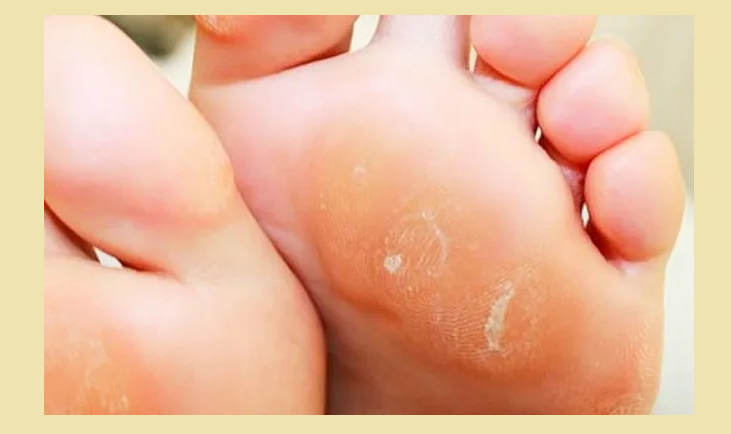
Topysh:
- They are formed mainly on the back of the foot or the front, in the area of \u200b\u200blifting the foot.
- These seals are more dense, consist of keratinized skin layers.
- They have blurry boundaries and can change in size.
- With transverse flat feet or orthopedic pathologies, early diagnosis of the disease is recommended.
Topties can cause inconvenience and strengthen pain when walking:
- Soreness, burning, increase in size is considered the reason for contacting specialists.
- Otherwise, education can accelerate in growth, provoke the formation of painful cracks with bleeding.
- The neglected forms of corns are more slowly amenable to therapy, and recovery measures can be significantly delayed.
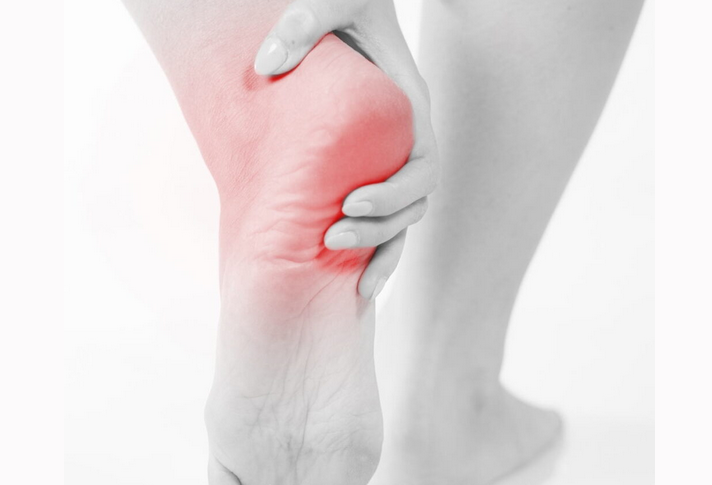
Fasit:
- Social fascia, or in common people "heel spur" - This is necrosis of the chronic course that does not have a bacterial focus.
- The inflammatory process covers the area of \u200b\u200bthe large ligament along the sole part of the foot.
- The heel spur is not considered an independent illness.
- As a rule, pathology manifests itself against the background of concomitant diseases.
- Fascia is a bunch of several layers of keratinized skin connecting the heel tubercle with the Achilles tendons.
- Persons of advanced years are more susceptible to disease.
The reasons for the appearance of fascia:
- Changes in the hematopoiesis system
- Damage to the nerve endings in the departments of the lower extremities
- Age -related features of bone structure
The main manifestation of pathology is a piercing pain in the heel that is not associated with fascia, but due to the inflammatory process in the connective tissues of the sole, between the heel hill and the fingers of the foot. Small formations cause no less discomfort than large ones. Pain is acute, and spreads to the entire foot. The intensity of pain may vary, depending on the fatigue of the legs. The disease causes not only physical pain and discomfort, but also reflects on the aesthetic side of the personality, modifying its gait, causing shakeness when walking.
If fascia (spurs) is detected, you should immediately seek help from an orthopedic. The doctor will conduct diagnostics, prescribe drug therapy, massages and special orthopedic insoles that facilitate walking.

HYGROMA:
- Cystic formation in tendons.
- Hygroms are voluminous in size, filled with serous contents. In appearance, hygroma is very similar to the cyst.
- To this day, among scientists, disputes are ongoing regarding the nature of the origin of this disease.
- Hygroma can be visualized on the skin and pass on its own, but after a while again to appear involuntarily.
- The upper part of the tendon cyst is especially dangerous, since its structure is tightly covered with connective tissue.
- The formation is closely located in tendons and joints, which adversely affects the further course of the disease.
- Unwanted small and large liquid inclusions can form from connective tissue, which under aggressive factors have a peculiarity of rebirth.
- A degenerative-dystrophic process can aggravate and lead to the formation of a pathological growth with a germination of a capsule.
- From the base of the capsule, articular exudate can be removed. This type of gigrome is called synovial cysts.
Science is not precisely proven what causes the formation of a hygram, but all, there are some factors provoking the risks of their appearance:
- Inflammatory processes in connective tissues
- Injuries - breaks and damage to ligaments, tendons
- Hereditary factors
- Long physical activity, "work" on the legs
- Distrophy of joints and connective tissue
- The patient has arthritis or other types of autoimmune diseases
Education process:
- The formation of a fairly dense structure, a motionless palpation, the capsule tightly adjacent to the tendon shell.
- Depending on the contents, it may have a dense or soft structure.
- Dimensions vary from several millimeters to larger inclusions, up to 10 cm.
- It does not cause pain, especially with insignificant sizes.
- With impressive size during walking, it causes pain and causes discomfort.
Gigrome treatment is aimed at physiotherapeutic methods, using:
- Low voltage currents for deep warming of the deep layers of tissues.
- Electromagnetic radiation - to improve microcirculation and saturation of cells with oxygen.
- Magnetic therapy - to prevent the inflammatory process in bone and cartilage.
- Salt, soda and mud baths. The mechanism of therapeutic effect is aimed at softening of coarse structures and their further removal.
Therapy has a pronounced anti -inflammatory effect.
Features of the structure of cones on the foot in a child: causes of appearance
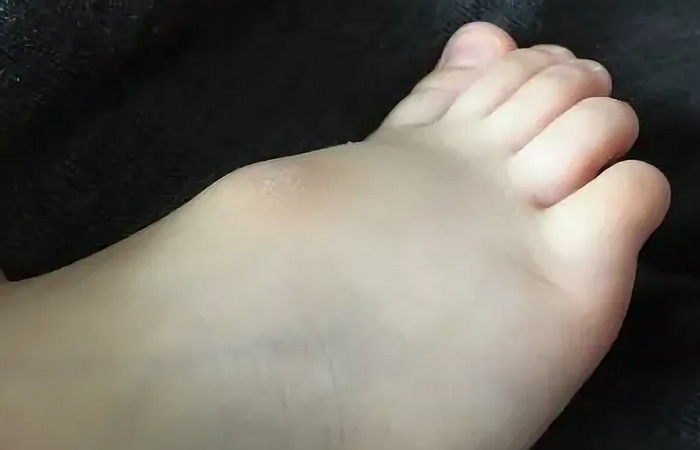
In children, cones are focused on the back or internal base of the foot. The reason for their appearance, as a rule, is injuries, stretching, splinters. But it happens that the appearance is also due to birth injuries. Such cones pass over time on their own. But if the bump on the foot of the child is accompanied by burning, moodiness, itching, pain during palpation, anxiety, and immediately visit the pediatrician. The doctor will conduct a full -time examination and, if necessary, will give a referral for a consultation to an orthopedist or surgeon.
If a child has a fresh injury, it is necessary to resort to first aid - apply a cold compress to the damage area, apply lifeguard ointment or Healer.
Patients, large, red, internal cones on the sole of the foot: which doctor to contact?
Education on the foot cannot be eliminated independently. In order for the treatment to give an effect and do not leave negative consequences, the cause of the appearance of the cone should be found out. If there is a sick, large, red, inner bump on the sole of the foot, then which doctor to contact?
- It is advisable to visit orthopedic, traumatologist and surgeon.
Having examined the affected area, the doctor will be able to draw conclusions regarding damage and prescribe the current therapy.
The bump on the foot got out: diagnostics
When contacting the doctor, he will examine the neoplasm, carry out palpation. The doctor must also prescribe a diagnosis that will help to correctly make a diagnosis and prescribe treatment. First, a visual inspection is carried out. Then the doctor may prescribe:
- X -ray joint study
- Ultrasound diagnostics
- Magnetic resonance therapy
- Computer tomography
- When detecting hygroma - puncture of the contents of the cyst
At the first stage of diagnosis, it is necessary to exclude concomitant diseases that have become the root cause of education:
- Cyst
- Inflammation
- Chronic keratinization of the skin with a necrotic phenomenon
- Degenerative-dystrophic diseases of the joints
How to treat? Read further.
How to treat cones on the feet: effective therapy
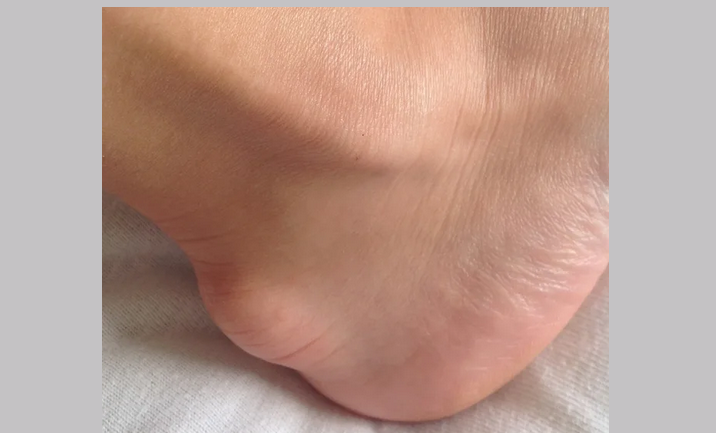
Treatment of any education on the foot is reduced to taking measures to eliminate the defect and possible reasons for its appearance. The person himself can prevent unwanted growths on the foot. To do this, you should adhere to simple recommendations:
- Avoid close and uncomfortable shoes
- Do not abuse the wearing of high -heeled shoes
- To facilitate walking, it is recommended to wear orthopedic insoles and special shoes
When the patient detects transverse flat feet due to the hereditary factor, wearing special orthopedic inserts, rollers or attacks may be required. They will help painlessly and without surgery to set up joints in place. This issue is dealt with by the orthopedic doctor. Given the patient's condition, the features of the course of the disease, the doctor will recommend gentle therapy. The independent wearing of orthopedic accessories is strongly not recommended. In the opposite case, the wrong selection and operation of such funds can aggravate the problem.
It is worth knowing: In medical practice, preference is given to drugs, tinctures, physiotherapy, physiotherapy exercises.
When the picture of the disease wears extensive symptoms, cones on the foot have to be removed with other methods. How to treat cones on the feet? Effective therapy:
- Surgery
- Cryodestruction
- UVT - shock—wave therapy
- Burning with a laser
If hygroma is determined at the inspection, radical measures are used:
- Blockade
- Puncture
- Splitting up
- Sclerotherapy
If the hygroma does not have a dense capsule, the doctor can crush the education. With a strong pressure, the capsule breaks, exudate through the skin comes out, the hygroma is burned and resolved. Surgeons turn to this method in rare cases, since there are risks of the appearance of a new relapse, and the procedure itself is extremely painfully tolerated by patients.
During a puncture, the hygroma is pierced with a thin needle, the liquid is pumped out. The procedure is carried out until the formation is completely resolved. Puncture does not guarantee the complete disappearance of the cone, the relapse may repeat again.
How to remove a bump on the foot: drug therapy
Most drugs are aimed at eliminating unpleasant symptoms and can be temporary, which does not allow to fully solve the problem. How to remove the bump on the foot?
Conservative methods of treatment are effective at the initial stages of the disease. In other cases, a special drug therapy is prescribed, which may include a group of the following drugs:
- Non -steroidal drugs to relieve inflammation
- Painkillers of natural or synthetic origin
- Diuretics to relieve swelling
Medication therapy is not always effective. For example, Hygroma is only succumbing to surgical treatment. However, if inflammation of the connective tissue and joints is detected, hormonal therapy is prescribed using corticosteroids. The drug is administered near the affected area of \u200b\u200bthe skin in the manipulation office.
Massage from cones on the feet: how to get rid?
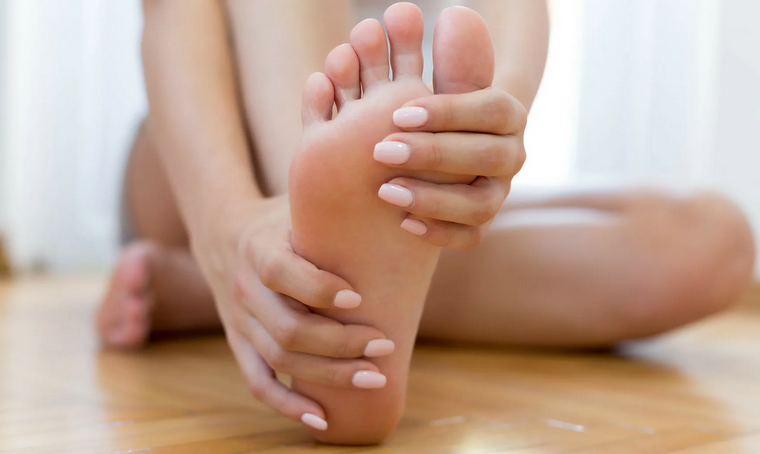
Massage of the legs, stop is considered one of the effective ways in combating undesirable formations - cones on the feet. It helps to improve blood circulation in the tissues, prevents the formation of arthrose plaques, does not allow blood to stagnate, and also prevents the formation of salts in the joints. The patient can easily master the technique of such an effect on his own. Daily massage will help to establish not only a psycho -emotional state, but also take care of the health of your legs.
Physiotherapy exercises, gymnastics, if a bump is formed on the foot
Do not neglect gymnastics or physiotherapy exercises. To prevent the formation of cones on the feet, it is recommended to regularly perform the gymnastics of the feet. Here are a few effective exercises:
- Walk on tiptoe, enhancing the load on the front of the foot. Do this, starting from one minute, then increasing the load by 5-10 minutes a day.
- Perform alternately rotating movements in the bending area. Do one way 20 times, then the same in the other.
- Train the foot with an expander.
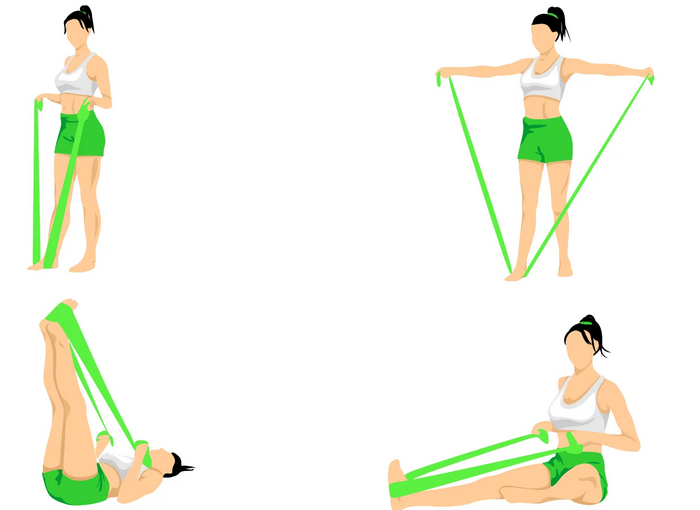
The complex of necessary exercises will be recommended by the orthopedic doctor.
Physiotherapy from sick cones on the foot
Physiotherapeutic methods of exposure have a beneficial effect on treatment. Often they are prescribed if cones on the foot hurt. But only after the main treatment and stabilization of the condition. The main methods used in practice:
- Paraffin applications
- Ionophoresis
- Mud and salt baths
- Electrical stimulation
- Acupuncture
The variable current frequency favorably affects the legs, perfectly relieve fatigue and helps eliminate loose structural formations.
Folk methods of treatment if a bump on the foot grows
Non -traditional medicine is ineffective in the fight against serious pathologies. But it can be a great addition to the main treatment method. Herbal decoctions, tinctures, compresses will only help relieve pain, temporarily relieve swelling from the feet and alleviate walking. But they will not be able to completely eliminate the problem. With the help of herbal decoctions, it will not be possible to remove the inflammatory process in deep muscle tissues, where there is a deforming process of the joints.
What are the folk methods of treatment if the lump on the foot grows? Positive dynamics is observed in patients with an unexpected history against the background of using such tools:
Salt baths for the legs:
- Make it simply - 10 liters of warm water 2 tablespoons Salt.
- Stir well and lower your legs.
- Grack 10-15 minutes - Until cooling (as soon as water cools down and the legs become uncomfortable - pull it out).
Bath from a decoction of oak bark:
- 2 tbsp. tablets of grass in a liter of boiling water and cook for 5-7 minutes.
- Then pour this broth into a container in which you will warm your legs.
- Add warm water, bringing volume up to 10 liters.
- Lower your legs and keep for 10-15 minutes.
Lners of grated potatoes:
- Rub the peeled potatoes on a fine grater and put the mass on gauze, folded in several layers.
- Attach the compress to the sore spot, cover with polyethylene and towel.
- Keep the compress within 8 hours. You can do it at night.
Iodine net:
- Draw a mesh of iodine using a cotton wool.
- It is better to do this before bedtime.
- If iodine is well absorbed in the morning, then on this day you can repeat the procedure.
- If the strips are still visible, then skip one day and make a new net the next day.
Ointment based on egg yolks and wax:
- Would need 30 g wax, 150 ml vegetable oil and half boiled yolk.
- The oil is placed in a water bath, finely chopped wax crumbles there, the mass must be stirred continuously so that the wax dissolves and a homogeneous consistency is obtained.
- After that, you can carefully add chopped yolk.
- It is important not to give the mass to boil, maintaining a constant temperature not higher than 70 degrees.
- When all the ingredients connect and dissolve, remove from heat and pour it into jars.
- Smear a sore spot every day within 14 days. Then the procedure can be repeated.
Compresses, which include medical bile:
- Before you make such a compress, steam your legs in warm water.
- Then gauze, folded in several layers (5-6), soak the bile and attach to the sore spot.
- Wrap a layer of cotton wool for a better warming effect.
- Cover the bandage with paraffinated paper. It will hold the oil solution.
- To fix, put on an elastic bandage.
- Keep such a compress for 24 hours Or at least make it at night.
The above methods will allow you to get rid of pain for a while and relieve inflammation.
Bumps appeared on the foot: when is the operation?

The conservative method of removing cones on the foot is considered the most effective. With the help of surgical intervention, you can solve the problem as quickly as possible, prevent the development of pathological processes and avoid unwanted side effects.
The operation will be relevant if the formation has a large area of \u200b\u200blocalization, causes pain and discomfort, and at the same time the foot has a significant degree of deformation. Excision of cones on the bottom of the foot is the most productive way to solve the problem.
Surgery methods of surgical intervention:
- Corrective osteotomy according to the method of Austin Reverdin-Grina
- Resistor arthroplasty
- Osteotomy in which the tied bone manages to grow in the correct position
- Arthrodesis
- Aesthetic correction of the set of foot
The first two methods are widely used abroad, mainly in European countries to remove cones on the upper and lower part of the foot. In Russia, preference is given to arthroplasty and osteotomy. During the operation, the plus bone is shortened, which allows you to achieve the correct position of the foot and give them an aesthetic look.
Which method is suitable for the patient - the attending physician decides, he will evaluate the localization of lesions and select the most harmless way to eliminate the pathology. It will take about two weeks for the recovery period. The patient will be able to return to a full -fledged, active life in six months. For quick rehabilitation, it will be necessary to follow the instructions of the doctor, and perform daily preventive measures.
Surgically, a bone on the foot, which appeared as a result of valgus deformation, is also surgically removed. The optimal methods of treatment are:
- Corrective osteotomy, at which the phalanx of the first finger is excised in the lower part of the foot.
- Exostctomy, where the modified part of the joint is eliminated, after which they are fixed using medical plates or screws. This intervention is more painful to transfer patients and requires more time to restore.
- Displacement of bone formations According to the method of Austin Reverdin-Grina.
Gigromes are subject to surgical removal if they:
- They have intensive growth
- Limit the mobility of the joint
- They cause pain
The hygroma is removed in several ways:
- Laser burning
- Excision
- Endoscopic method
The most optimal option is the complete removal of the hygroma along with the capsule and nearby cysts through the hole in the skin. After a while, the relapse of the disease can again declare itself.
Stop hurts - bump: prevention and forecast measures
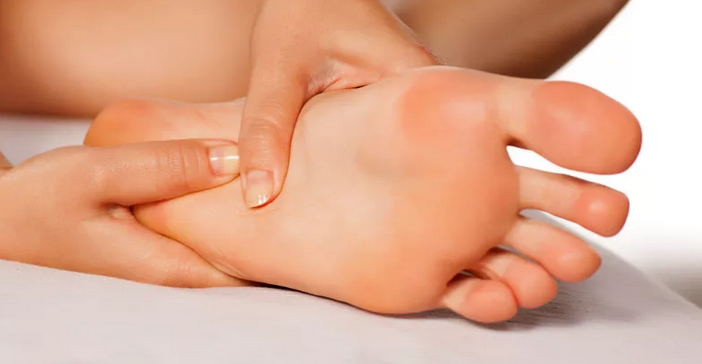
The main measures for the prevention of pain and cones on the foot are in the prevention of flat feet. All efforts should be directed to prevent pathology. This issue must be approached comprehensively:
- Perform massage
- Therapeutic gymnastics
- Relaxing foot baths
- Wearing a special orthopedic shoes
If someone had hereditary factors in the formation of cones, first of all, it is necessary:
- Refuse uncomfortable, low -quality shoes and avoid high heels.
- Shoes choose a free, non -compressing base of the foot.
- Adhere to a healthy diet and do not overload your legs with physical exertion
- More often to give the legs “will”, walk on small pebbles, sand. Such manipulations perfectly stimulate blood circulation, preventing blood from stagnant.
- Perform massage (self -massage) to prevent flat feet.
- If the cones are detected, immediately visit a doctor.
Only a comprehensive implementation of recommendations can give a positive result a good forecast. For healing purposes, the fundamental factor is regularity and efficiency. Timely appeal to specialists will prevent unwanted phenomena, in the initial stages to prevent the disease and significantly improve your well -being!
Video: Bone on the foot - what to do?
Video: Live great! Stop disease and their treatment
Video: Hygroma. Symptoms. A photo. Treatment
Read on the topic:
- Diabetic foot, diabetic foot syndrome: symptoms, causes, treatment
- The foot, foot, sole of the legs when walking hurts: Causes
- What are the indications and contraindications of self -massage of the feet?
- Why do legs burn with fire before bedtime, at night in women, men?
- Dyshidrosis of the hands and feet of the legs: causes, symptoms, treatment

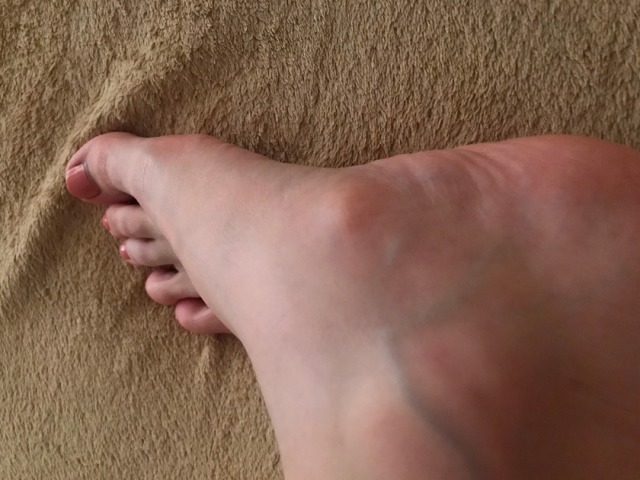



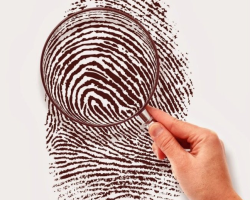


If there are problems with the ankle, very often such pain appears. Therefore, it is impossible to neglect non -steroidal anti -inflammatory, which the doctor prescribes is definitely impossible. But to reduce their dosage, I can advise the Evalarov tincture of the saber. It does not harm the stomach, but is also aimed at reducing inflammation. Only this helped me cope with the problem.